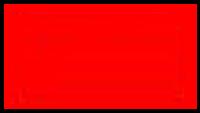Topic: AIF - 2B - 2 LHB
2nd LH Bde, AIF
2nd Australian Light Horse Brigade
Outline

Formed in September 1914 as part of the 2nd Contingent and attached to the Australian Division, the 2nd Light Horse Brigade was made up of Light Horsemen from two different states. The Regiments included:

5th Australian Light Horse Regiment
This Regiment was recruited exclusively Queensland.

6th Australian Light Horse Regiment
This Regiment was recruited exclusively from New South Wales.
The use of a wallaby fur puggaree gave the unit a distinctive appearance.

7th Australian Light Horse Regiment
This was projected to be a composite Regiment recruited from three states, New South Wales, South Australia and Western Australia. The Squadron split was scheduled to be as follows:
"A" Squadron recruited from New South Wales.
"B" Squadron recruited from South Australia from where the commander, Lieutenant Colonel Miell was appointed.
"C" Squadron recruited from Western Australia.
However the volume of recruits meant that "B" Squadron was enlarged to the 9th Light Horse Regiment and "C" Squadron was enlarged to 10th Light Horse Regiment. Consequently the 7th Light Horse Regiment became an exclusively New South Wales unit.

2nd Signal Troop
The 2nd Signal Troop was created on 1 April 1916 by drafting in four signallers from each of the 12 Regiments at the Suez Canal. In addition 16 men from the Wireless troop were drafted into the 2nd Signal Troop.

2nd Light Horse Field Ambulance
The core 2nd Light Horse Field Ambulance was formed in Brisbane with a contingent from from Gympie.

2nd Light Horse Brigade Train
The 2nd Light Horse Brigade Train was primarily recruited around Brisbane and trained at Enoggera. After Gallipoli, this unit underwent some name changes from 2nd Supply Section in February 1916 to 34th Australian Army Service Corps Company in February 1917.

7th Mobile Veterinary Section
After the formation of the Anzac Mounted Division, the three individual Regimental Veterinary sections were brigaded to form the 7th Mobile Veterinanry Section.

2nd Light Horse Machine Gun Squadron
In July 1916, all Regimental Machine Gun Sections were to be excised and brigaded to form a Machine Gun Squadron. The 5th, 6th and 7th Machine Gun Sections were combined to form the 2nd Machine Gun Squadron under the command of the Brigade.

Artillery
Artillery support was provided for the 2nd Light Horse Brigade from British batteries. The first British battery attached to the Brigade was the 3rd (Territorial Force) Horse Artillery Brigade, Somerset Battery. This battery remained until the re-organisation of February 1918 when the Somerset Battery was replaced by the British 18th Royal Horse Artillery Brigade, Inverness Battery
2nd Light Horse Training Regiment
Formed in Egypt during March 1916, this unit trained incoming reinforcements while allowing the wounded and sick a place to recover before returning to active service. The Training Regiment contained three squadrons, each duplicating the Regiments within the Brigade to whom it supplied the reinforcements. The Training Regiment was disbanded in July 1918 to be replaced by the Anzac Light Horse Training Regiment when recruits were no longer tied to a Regiment but placed in a general pool of reinforcements called the General Service Reinforcements.
2nd Light Horse Double Squadron
Formed Egypt 6 July 1916 from 2nd Light Horse Brigade reinforcements. It was officered and administered by the 2nd Light Horse Brigade. This Double Squadron was broken up in November 1916 with the men being transferred to the newly formed Imperial Camel Corps Battalions.
Embarkation
The Brigade embarked to Egypt during the months of October and November 1914. In Egypt additional training occurred at the Maadi Camp.
See: Troop transport ships for information and photographs about the various ships employed in transporting the troops to Egypt.
Colour Patch
To assist with identification of the various units within the AIF, Divisional Order No 81 (A) Administration was issued at Mena on 8 March 1915 detailing the Colour Patch for the 2nd Light Horse Brigade as others received their colours. The colour patch was made of cloth 1¼ inches wide and 2¾ inches long and worn on the sleeve one inch below the shoulder seam. The colour patch for the 2nd Light Horse Brigade was plain red.

The individual units attached to the 2nd Light Horse Brigade carried the white colour as a lower triangular part of the colour patch, the unit itself having their colour on the top. This is illustrated with the above description about each individual unit.
Commanders
Brigadier General Granville De Laure Ryrie, 17 September 1914 to March 1919
Attachments
Formed Australia September 1914.
Attached to the New Zealand and Australian Division from December 1914 to April 1915. Attachment ceased on the Division's deployment to Gallipoli.
Attached to the New Zealand and Australian Division at Gallipoli from May 1915 to February 1916.
Attached to the Anzac Mounted Division March 1916 until March 1919.
Campaigns
Egypt:
- Defence of Egypt
Gallipoli:
- Defence of Anzac; and,
- Withdrawal from Anzac.
Sinai:
Palestine:
- First Battle of Gaza;
- Second Battle of Gaza;
- Third Battle of Gaza;
- Beersheba;
- Jerusalem;
- Jericho;
- Es Salt;
- Megiddo; and,
- Amman
Disbandment
The Brigade returned to Australia in July 1919. As each Regiment arrived in the specific home port, they were disbanded.
Further Reading:
Battles where Australians fought, 1899-1920
Citation: 2nd Australian Light Horse Brigade, Outline



